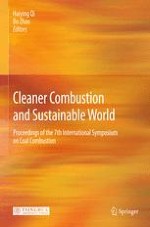2013 | OriginalPaper | Chapter
Comparison of Three Mineral Candidates in Middle and Low-Pressure Condition: Experimental Study
Authors : Heng Yan, Jun-ying Zhang, Yong-chun Zhao, Zhi-liang Wang, Xia Pan, Jun Xu, Chu-guang Zheng
Published in: Cleaner Combustion and Sustainable World
Publisher: Springer Berlin Heidelberg
Activate our intelligent search to find suitable subject content or patents.
Select sections of text to find matching patents with Artificial Intelligence. powered by
Select sections of text to find additional relevant content using AI-assisted search. powered by
